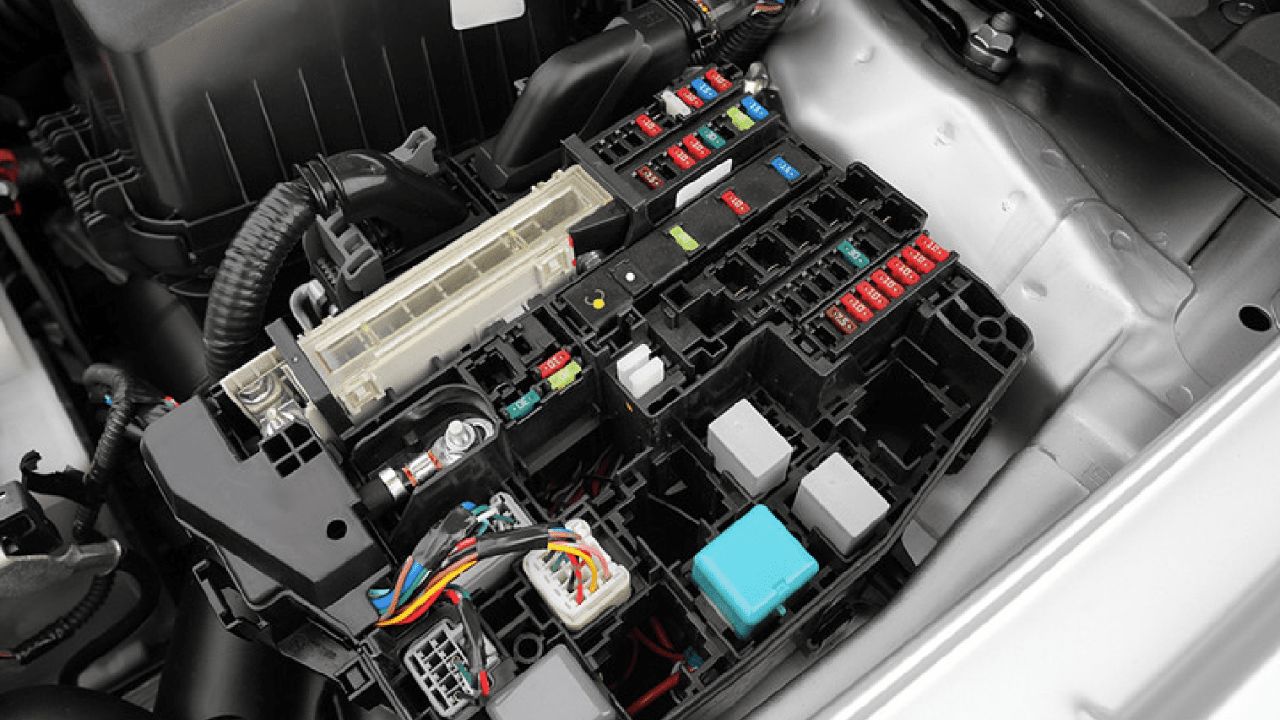Just as electrical devices depend on fuses for their safety, vehicles’ electrical components do the same. Automotive fuses are of different types and their usage depends upon the specific application, voltage, and current demands of the electrical circuit.
It’s essential to know the different types of fuses used by automotive electrical components and their capability. As well as know where they are located in the vehicle, which will all be treated in this article.
Today you’ll get to know the definition, working, classifications, components, types, and identification of automotive fuses.
What is a fuse?
In general terms, a fuse is a safety electrical device that is used to protect an electrical circuit from overcurrent. It’s mounted to various electrical circuits since overcurrent conditions happen at an unexpected time.
The system works as a circuit breaker or stabilizer that also protects devices from damage. However, a thin strip or strand is used in this situation.
In an automobile vehicle, fuses perform the same task. They can be mounted in fuse blocks, inline fuse holders, or fuse clips.
Although some automotive fuses are occasionally used in non-automotive electrical applications. Components of automotive fuses contain a thin strip or strand of metal.
But because there are many types available with different working capacities their material may be quite different. Furthermore, automotive fuses are extensively used in cars, trucks, buses, and off-road transportation.
The purpose is to protect the cables, wires, and electrical components of the vehicle that supply power to crucial electrical parts like lights, heaters, air conditioning, radios, power windows, and many others.
Just as earlier mentioned, it is important to know types of fuses used in vehicles differ based on the manufacturer and model of the car. Even though the bade fuse, which is also called the spade fuse is the common type.
Classifications and types of automotive fuses
Automotive fuses can be classified into four distinct categories:
- Blade fuses
- Glass tube or Bosch types
- Fuse limiter
- Fusible links
Blade fuses:
Blade types of fuses are used on older version cars, manufactured after 1986. They can be easily identified by their plastic body and two metal prongs.
Even though all petrol-powered vehicles use a blade fuse type, they come in six different sizes with current ratings ranging from 1 ampere up to 100 amperes.
Bosch Fuses
Bosch fuses are commonly seen in old European cars. The fuse types can be identified by the conical ends and the physical dimension size of 6x25mm. Bosch fuses are also known as 6AC, GBC, or Torpedo fuses. Although, the ampere rating is denoted by the color of the fuse.
Glass Tube Type Fuses
The glass tube types of fuse are mostly ¼ inch in diameter but varied in length and are designed with the AG suffix for automotive glass for example 1AG, 3AG, 7AG, 8AG, SFE fuses, etc. The glass fuses are typically available in ratings of 1A to 30A. Apart from vehicles, some other electrical applications make good use of this fuse.
Lucas Fuses
Lucas types of fuses are predominantly used in older vehicles. They are available in both glass and ceramic tube fuse. The ceramic type is easily identifiable by its canonical ends and is either 1 or 1.25 inches in length.
The Lucas glass tube fuse has different diameter sizes when compared to the American glass tube fuse. But often the design of Lucas fuse holders does accommodate their American glass tube fuse counterparts.
Fuse diagram
The diagram below will give you more knowledge on the various types of automotive fuses:

Just as earlier mentioned blade fuses are the most in cars. They are of six varieties which include: Micro2, Micro3, LP-mini (low-profile mini), Mini, Regular (ATO), and Maxi.
The cartridge types of fuse provide increased time delay and low voltage drop so that high current circuits can be protected. It also handles inrush currents.
PAL Fuses are designed for straight leg slots or bolt-down fixing.
Circuit Breakers is a device that can be reset either manually or automatically to resume normal operation. It does not work like a fuse that must be replaced once it operates.
High Current Fuses are used for high-current wiring protection.
Advantages and disadvantages of vehicle fuses
Advantages:
Below are the benefits of automotive fuse:
- Overload or high current are terminated.
- The absence of a fuse causes electrical faults that can occur in the wiring or burn the vehicle’s electrical components.
- An electrical hazard is reduced as burning electronics can lead to an uncontrolled fire.
- Safe cost of repair in the vehicle.
- The fuse itself is cheap and can be easily replaced.
- Most types of fuse are inexpensive.
- Additional care or maintenance is not required.
- They are portable and can be easily moved around.
Disadvantages:
Despite the advantages of fuses some limitations still occur. below are the disadvantages of fuse in their various applications:
- The time-current feature will not be time-synchronized with that of the safeguarding element.
- The features of reversible time-current permit the device to be employed for overload safeguarding
- Locating a specific fuse in the vehicle can be difficult.
- It must be replaced once it operates.
- Fuses serve different purposes; they cannot be used interchanged else different operation is done.